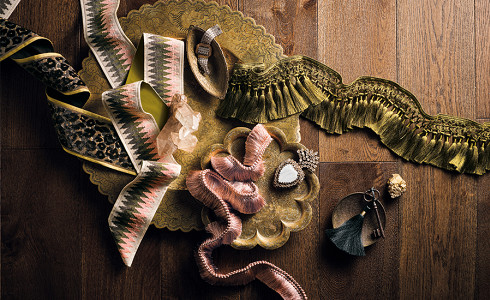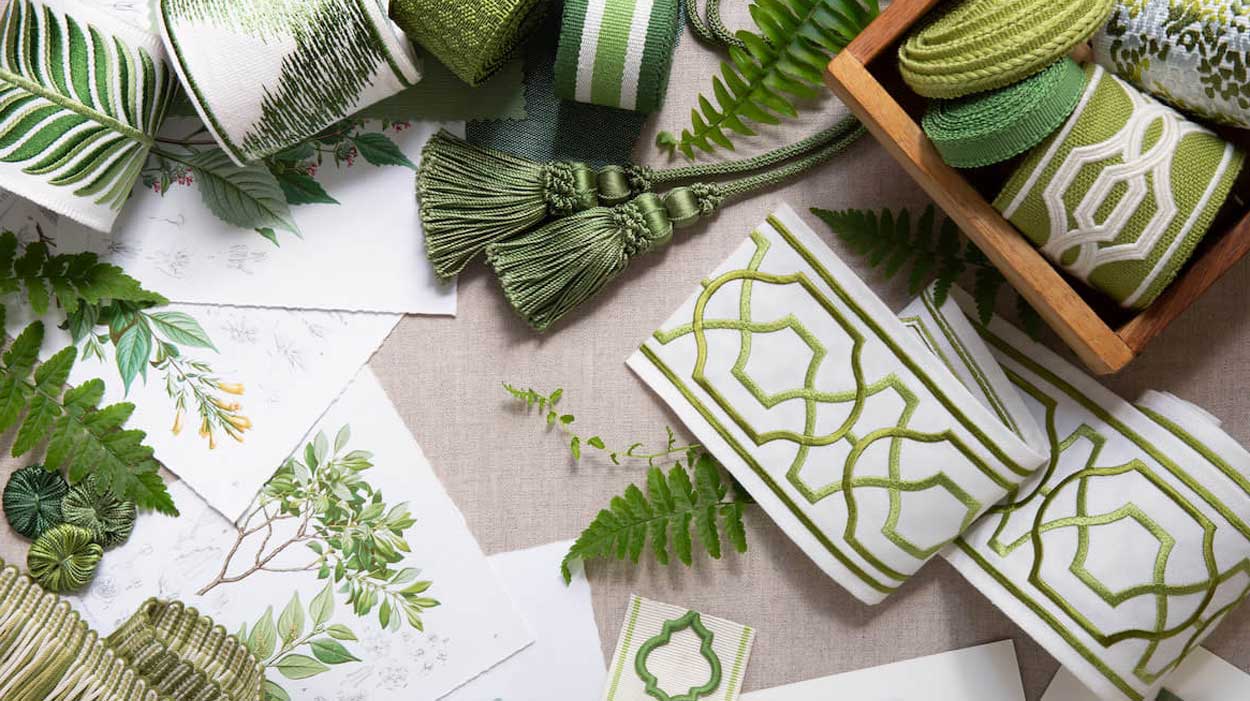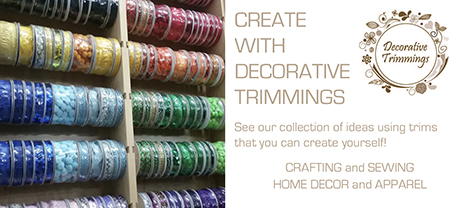Welcome to the colorful world of decorative trimmings for fabrics! Whether you’re a seasoned crafter or just venturing into the realm of fabric embellishments, understanding the diverse options available can transform your projects from ordinary to extraordinary. In this extensive guide, I’ll share my experiences, tips, and insights into the fascinating universe of fabric trimmings, ensuring you feel inspired and informed!
What Are Decorative Trimmings?
Decorative trimmings refer to various embellishments that can be added to fabrics to enhance their appearance and give them a unique character. These can include lace, ribbons, braids, appliqués, and much more. The right trimming can elevate your home décor, fashion pieces, and crafts, making them visually appealing and personalized.
Types of Decorative Trimmings
Decorative trimmings come in numerous styles, materials, and applications. Here’s a closer look at some popular types:
1. Lace Trimmings
Lace trimmings can add an element of elegance and delicacy to any fabric. Commonly found in bridal wear and lingerie, lace is versatile and available in various styles, such as:
- Sheer lace
- Venise lace
- Cotton lace
2. Ribbons
Ribbons are perhaps the most versatile trimmings. They come in different widths, textures, and colors. You can use them for:
- Sewing onto garments
- Creating bows and accents
- Decorating home textiles

3. Braid Trimmings
Braid trimmings are made using intertwining threads, providing durability and a unique design. Commonly used in upholstery, they add a sophisticated touch.
4. Appliqués
These are decorative pieces sewn onto a fabric to create a raised design. They can be cut into shapes or specific patterns, making them perfect for children’s clothing or themed decorations.

5. Fringe and Pom-Poms
Fringes and pom-poms add a playful touch to any project. They’re often used in home décor items such as cushions or curtains, bringing a lively texture.
Choosing the Right Trimming for Your Project
Deciding on the right decorative trimming can seem daunting, but here is a step-by-step approach that simplifies the process:

Step 1: Define Your Project’s Style
Consider the overall aesthetic you want to achieve. Are you going for rustic, elegant, or modern? This will guide your choice of trimming.
Step 2: Select Appropriate Materials
Choose materials that complement your main fabric. For instance, lightweight lace may work well with silk, while sturdier braids are better suited for denim.

Step 3: Consider Functionality
Think about the purpose of your project. For example, if you’re embellishing a garment that needs to be washed often, opt for durable trimmings that can withstand wear and tear.
Application Techniques for Decorative Trimmings
Applying decorative trimmings can vary in technique. Below are some common methods:

1. Sewing
This is the most traditional method. You can hand-sew or use a sewing machine, depending on your comfort level and the garment type.
2. Hot Glue
If you’re working with crafts or home décor, hot glue is a quick solution for adhering trimmings. Just make sure it’s fabric-safe!

3. Fabric Adhesives
Fabric adhesives are great for lightweight trimmings, providing a clean finish without visible stitching.
4. Iron-on Techniques
Some trimmings come with an adhesive backing that you can activate with heat, allowing for a no-sew option.
Comparing Decorative Trimmings: A Quick Reference Table
| Type of Trim | Best Use | Durability | Application Difficulty |
|---|---|---|---|
| Lace | Bridal, lingerie | Moderate | Medium |
| Ribbons | All-purpose | Variable | Easy |
| Braid | Upholstery, garments | High | Medium |
| Appliqué | Kids’ clothing, crafts | Moderate | Medium to Hard |
| Fringe/Pom-Poms | Cushions, curtains | Moderate | Easy |
The Pros and Cons of Decorative Trimmings
Pros
- Enhances visual appeal
- Allows for personalization
- Wide variety of options available
- Can rejuvenate old or plain fabrics
Cons
- Some may require careful maintenance
- Can add weight or bulk to fabrics
- Finding the right trimming can be time-consuming
- Cost can vary based on materials
Incorporating Trimmings into Your Home Décor
Decorative trimmings aren’t limited to clothing; they can significantly enhance home décor as well. Here are some ideas:
1. Upholstery Projects
Adding braids or fringes to chair covers or sofas can refresh the overall look of your furniture.
2. Curtains and Drapes
Use decorative trimmings at the edges of curtains for a polished, custom look.
3. Cushions and Throws
Embellish cushions with pom-pom edges or lace trims for a cozy, inviting atmosphere.
Frequently Asked Questions (FAQs)
What materials are commonly used for decorative trimmings?
Common materials include lace, polyester, cotton, silk, and acrylic. The choice largely depends on the application and desired aesthetic.
How do I care for garments with decorative trimmings?
Always check the care label for specific instructions. Generally, handwashing is recommended for delicate trimmings, while sturdier materials may be machine washable.
Can I use hot glue for all types of fabric trimmings?
While hot glue works great for many projects, it’s essential to ensure that the fabric can tolerate heat. Delicate materials like lace may not be suitable.
Are decorative trimmings expensive?
The cost of decorative trimmings varies widely based on the material and complexity. However, there are plenty of affordable options available in craft stores or online.
Can I add decorative trimmings to existing garments?
Absolutely! Adding trimmings to existing clothing can personalize and revitalize your wardrobe.
Conclusion
Decorative trimmings for fabrics open up a world of creativity, allowing you to express your personal style and enhance the beauty of your projects. With a variety of types and application methods, there’s no limit to the ways you can embellish your fabrics. Whether you choose to sew, glue, or iron on your trimmings, the result will always be a reflection of your artistic vision. So gather your materials and let your imagination run wild!